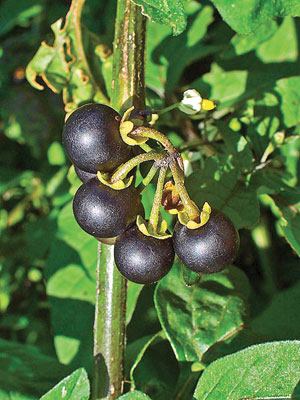Identifying forage pests
Now is the time to start scouting fields and pastures for invasive pests that can cause major damage to fall forage. By scouring fields in the summer months, producers can catch the infestations before extensive damage is done. Two important forage pests to look for this time of year are fall armyworms and bermudagrass stem maggots.
Fall Armyworms
Fall armyworm (FAW) populations occur throughout the area as early as June and continue through early fall. Severe infestations can cause substantial forage and hay production losses. In addition, outbreaks in the fall months may prevent newly emerged winter annuals from emerging. “If fields are not routinely scouted, damage may appear quickly (almost overnight) because infestations are easily overlooked when caterpillars are small and eating very little,” Dr. Kelly Loftin, University of Arkansas professor and entomologist, said.
FAWs feed on variety of forages, but often prefer lush well-fertilized bermudagrass. The FAWs threaten newly emerged small grains and ryegrass in the late summer or early fall.
Bermudagrass Stem Maggots
The Bermudagrass stem maggot (BSM) is a Bermudagrass pest. The larvae (or maggot) develops and feeds inside the plant shoots, causing sap and water to be cut off from the top leaves. This kills the top two or three leaves. “Heavy infestations result in stunting and significant yield loss,” Dr. Loftin explained. “Once readily apparent damage occurs, significant yield loss is likely.”
Scouting Tools
This time of year, experts recommend scouting fields on a routine basis. At least once a week or more frequently if possible. Check fields in order to identify the infestation and get it controlled before big losses occur.
A few tools can help producers identify infestations early on. Dr. Loftin recommends using an insect net to sweep the grass while checking pastures. Many times, FAWs in their early stages and other infestations, can go unnoticed through simple observation. Utilizing an insect net to sweep through the grass will uncover the small FAW larvae.
If producers find FAW larvae in their sweep nets, then experts advise looking on grass blades, stems and thatch for larvae. Then count the number of FAW larvae per square foot. Dr. Loftin encourages producers who find an average of three or more larvae per square foot to act. “This action may be harvesting for hay if enough grass is present to justify harvest,” Dr. Loftin said. “The other option is to treat the FAW infested field with an insecticide labeled for use against FAWs in forage.”
Additionally, sweep nets are helpful in alerting producers of the presence of egg laying BSM flies. Blue or yellow sticky cards can also be utilized to detect the presence of adult BSM flies in fields. Producers should keep a close eye on their bermudagrass to detect and estimate damage.
Scouting Tips
When walking through a field, producers should look for small flies flying just above the canopy as these could be BSM adults. Producers should also check for caterpillars feeding on the grass. In addition, forage appearance provides a good indication of insect damage.
Another tip to consider is if the field appears frosted, then it could be a sign of very early stages of a FAW infestation. This is because freshly hatched caterpillars often feed on the underside of leaves. If found on bermudagrass, it may be damage from BSM. Lastly, be cognizant of birds feeding in the field or the odor of a freshly mowed yard, because both can indicate the presence of a FAW infestation.
Treatment Options
When it comes to FAWs, experts recommend using insecticides that have longer residual activity especially when FAWs of varied sizes are present. When dealing with a field damaged by an BSM infestation, a producer’s best option may be cut the field. Then seven to ten days after cutting, treat the field with a labeled pyrethroid insecticide to control egg-laying adult flies. “No effective systemic insecticides are labelled to control the maggots developing in the shoots,” Dr. Loftin added.




